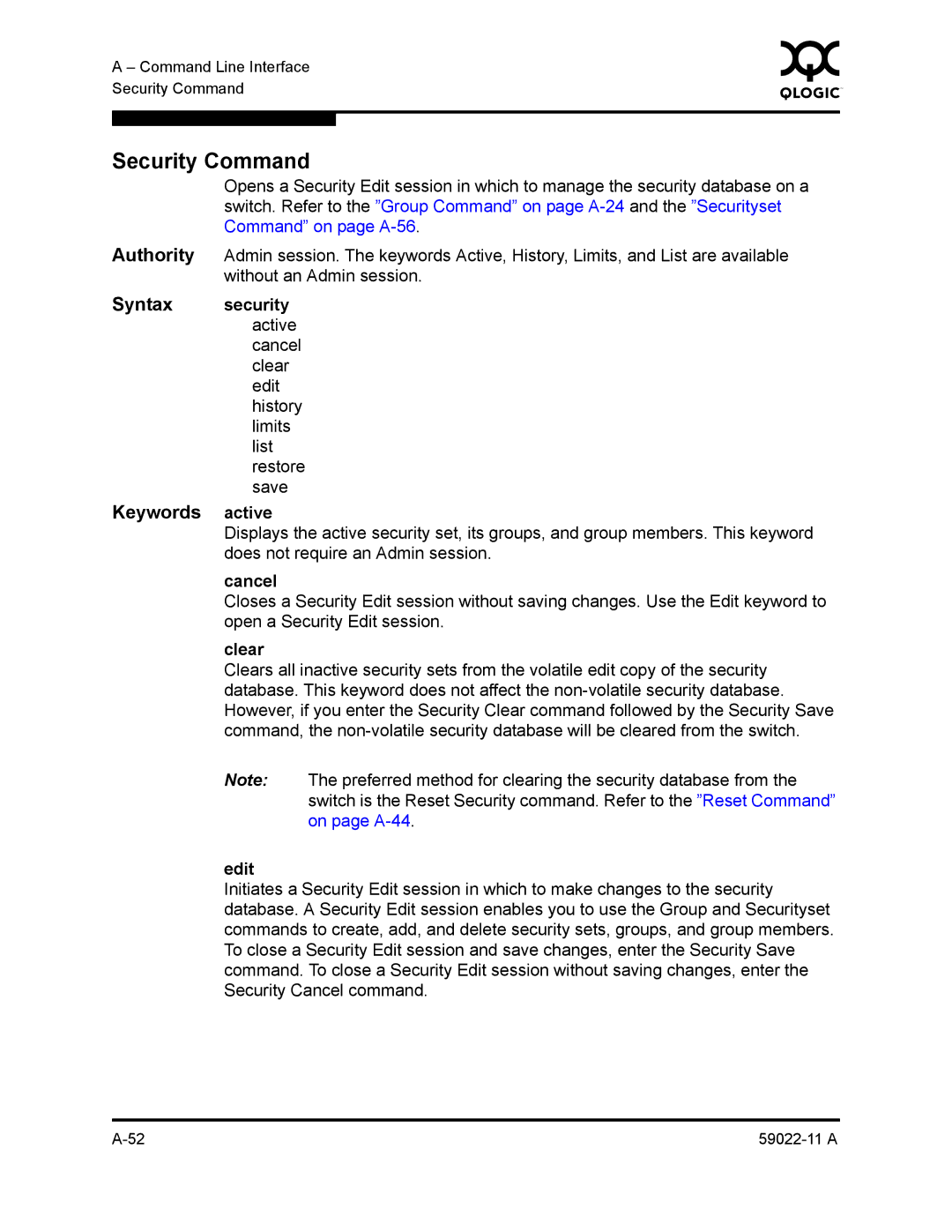A – Command Line Interface | 0 | |
|
| |
Security Command |
|
|
|
|
|
|
|
|
Security Command
Opens a Security Edit session in which to manage the security database on a switch. Refer to the ”Group Command” on page
Authority Admin session. The keywords Active, History, Limits, and List are available without an Admin session.
Syntax security active cancel clear edit history limits list restore save
Keywords active
Displays the active security set, its groups, and group members. This keyword does not require an Admin session.
cancel
Closes a Security Edit session without saving changes. Use the Edit keyword to open a Security Edit session.
clear
Clears all inactive security sets from the volatile edit copy of the security database. This keyword does not affect the
Note: The preferred method for clearing the security database from the switch is the Reset Security command. Refer to the ”Reset Command” on page
edit
Initiates a Security Edit session in which to make changes to the security database. A Security Edit session enables you to use the Group and Securityset commands to create, add, and delete security sets, groups, and group members. To close a Security Edit session and save changes, enter the Security Save command. To close a Security Edit session without saving changes, enter the Security Cancel command.
